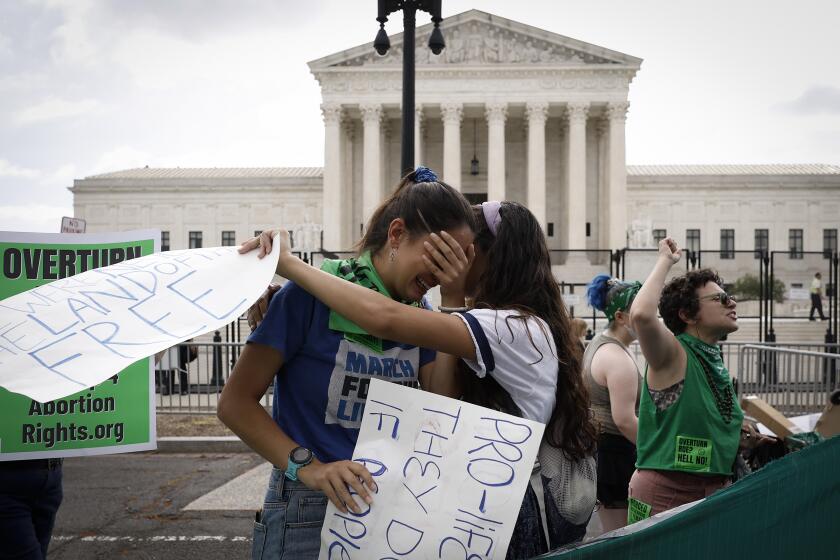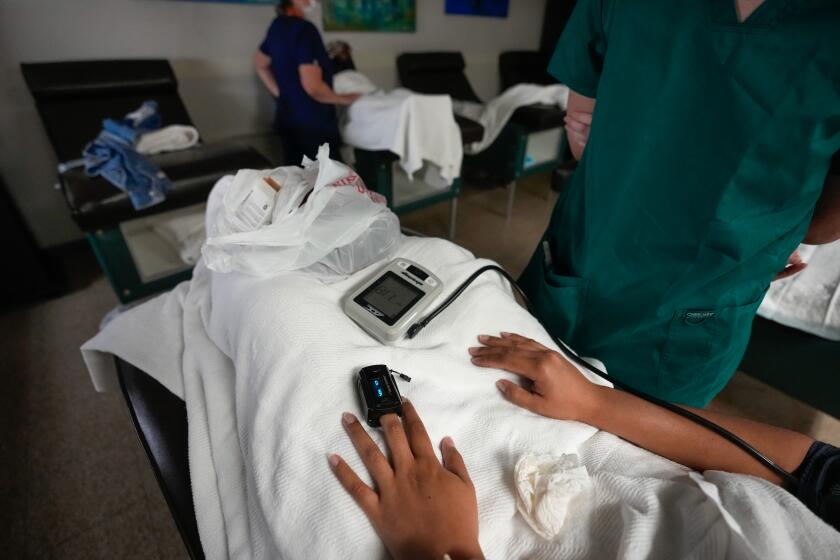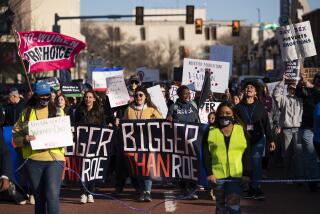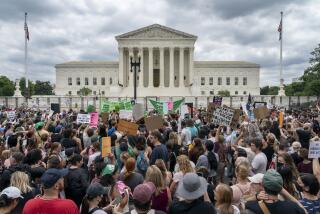Roe vs. Wade reversal could affect millions of Latinas, UCLA study finds
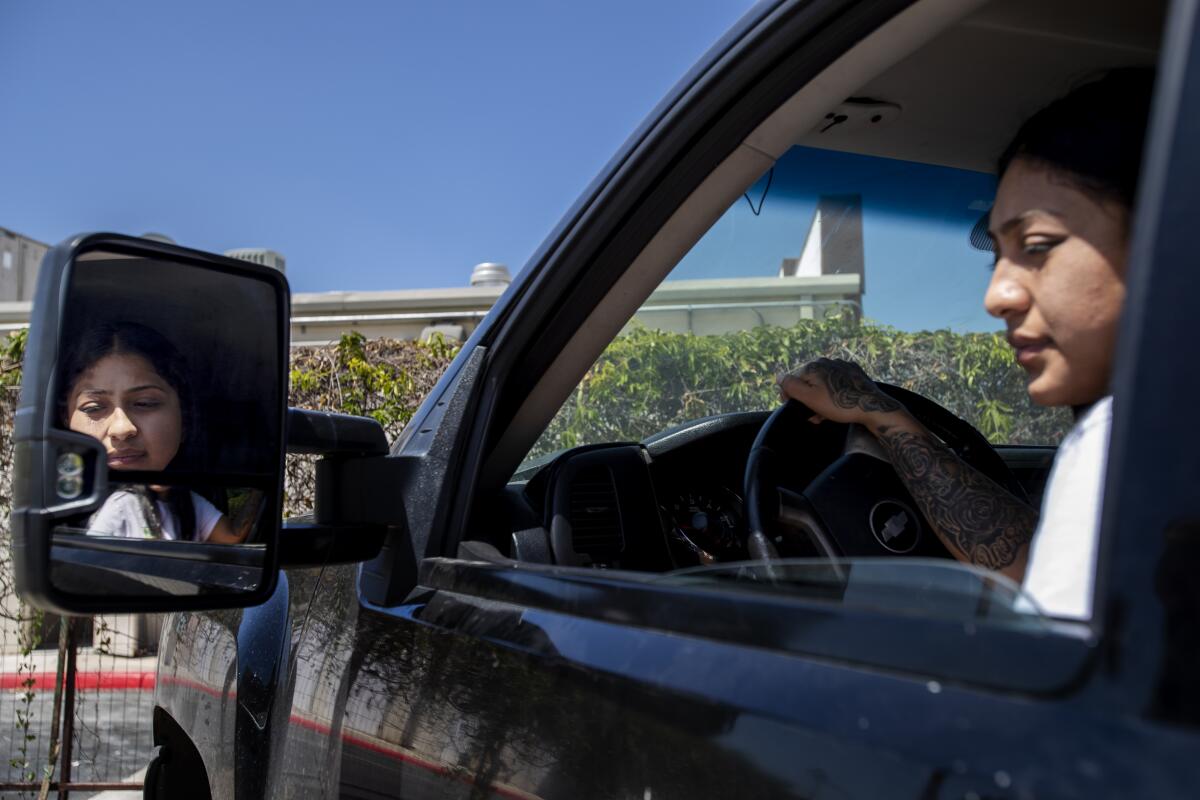
The Supreme Court decision overturning Roe vs. Wade could make it more challenging over time for more than 5 million Latinas to access abortions, according to a new report.
Researchers said in a report released last week by the UCLA Latino Policy and Politics Institute that millions of Latinas of child-bearing age live in states with strict antiabortion policies, making them vulnerable to being disproportionately affected. While the majority of Latinas are in California, Florida and Texas, the report noted that the latter two states are battlegrounds for antiabortion laws.
The report used a combination of data from the U.S. Census Bureauâs American Community Survey and Guttmacher Institute in its analysis of the impact of the Dobbs vs. Jackson Womenâs Health Organization decision.
âLatinas continue to be invisible, disposable and inconsequentialâ even though theyâre being affected by these decisions, said Sonja Diaz, founding director of the UCLA Latino Policy and Politics Institute.
Diaz said there is not a critical mass of Latinas in decision-making power at state legislatures and in federal government. She said that where young Latinas live dictates much about their collective future and the inequities they may experience with not being able to choose whether they have a child.
âThere isnât the nuance and attention and full treatment to the Latina experience in this country that is afforded to non-Hispanic white women,â Diaz said. âWhen we talk about Dobbs, weâre really thinking about the universality of women, but thereâs a central focus on white women ⦠so the research at [the institute] was trying to put a spotlight on Latinas in ways that made empirical sense.â
The report comes as healthcare providers, advocates and lawmakers continue to assess the current and longer-term effects of the Supreme Courtâs decision in June to overturn the 1973 Roe vs. Wade decision, giving states the power to decide how much access to abortion is allowed.
Weeks before the decision was announced, controversy flared when Politico reported on a leaked opinion written by Justice Samuel A. Alito Jr. that made clear how the court would likely rule.
By the time the decision came out, some states had so-called trigger laws already in place that instantly stopped health providers from being able to offer abortion procedures leading to confusion and some women being unable to get help, even while in the waiting room for their appointment.
In a historic reversal, the Supreme Court strikes down a half-century of nationwide abortion rights in the U.S.
Abortion rights advocates decried the decision as denying women the chance to decide whether they wanted to carry a baby to term, and having the greatest impact on women of color and low-income women. Abortion opponents celebrated the decision as saving babies and giving pregnant women the chance to put their children up for adoption or step into parenthood.
Diaz said Latinas face layers of challenges, given that healthcare access varies depending on where they live, the potential language barriers that come with seeking care and health insurance status.
She also said lack of equal pay for Latinas and many of them leaving the workforce during the COVID-19 pandemic to help with child care or elder care is also going to make it challenging for them to regain economic footing. It would also make it challenging for them to pay for abortion care and other needs like traveling to different states if necessary for the procedure.
âThe fact that over two dozen states are restricting what rights women and women identifying persons have over their body, this is going to be front and center an American issue because of the numerosity, and the potential and the youthfulness of Latinas,â Diaz said.
UCLA researchers recommended in the report that, among other things, abortion be codified in state constitutions.
In June, a report from the Guttmacher Institute, a nonprofit that advocates for reproductive health, found that abortions rose 7%, from 13.5 per 1,000 women and girls of child-bearing age in 2017 to 14.4 in 2020.
In 2020, there were 930,160 abortions in the United States, an 8% increase from 2017 and the first significant rise in three decades.
The impact of the overturned ruling will be unclear until data like birthing rates and abortion rates are released by health departments and providers over time, said Alina Salganicoff, director of Womenâs Health Policy at the Kaiser Family Foundation, a nonpartisan organization focused on healthcare.
She said the coming data will also have a better breakdown of which populations are being most affected by various abortion policies across the country.
Right now thereâs âa data vacuumâ because itâs unclear how many women are traveling out of state or out of the country for abortions or how many are using abortion medication bought online, Salganicoff said.
But for anyone living in a state with abortion restrictions, she added, it will likely be difficult if they do not have financial resources to pay for abortion services or travel to get there. But the same issues can come up in California too.
She said even though California has less-restrictive abortion laws, no one should assume people are able to easily access services, particularly if theyâre afraid to travel because of their immigration status or proximity to officials from Immigration and Customs Enforcement.
âWhen you talk about populations of women who are disproportionately low income, disproportionately marginalized in terms of healthcare, disproportionately criminalized, you know that whatâs happening in terms of abortion access means that they have far fewer resources,â Salganicoff said.
More to Read
Sign up for Essential California
The most important California stories and recommendations in your inbox every morning.
You may occasionally receive promotional content from the Los Angeles Times.
